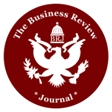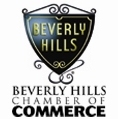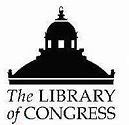|
Understanding FDI and
Production Networks in East Asia
Dr. Willem Thorbecke,
Japan’s Research Institute of Economy, Trade and Industry (RIETI), Tokyo, Japan
Nimesh Salike, Lecturer,
International Business School Suzhou, Xi'an Jiaotong-Liverpool University, China
ABSTRACT
We investigate the factors
influencing foreign direct investment in East Asia. We provide empirical
evidence from the electronics industry supporting Kojima’s (1973) hypothesis
that FDI in the region originates from the capital exporting country’s
disadvantaged industry into the host country’s advantaged industry. These
results imply that FDI and trade are complementary, unlike in Mundell’s (1957)
model where they are substitutes. The results also indicate that exchange rate
volatility deters trade, implying that reduction in the service link cost
between production blocks can promote fragmentation. These findings imply that
host countries in East Asia can obtain technology transfer by lowering service
link costs. Why
do firms engage in foreign production? According to Dunning (1988), the answer
depends on a firm’s OLI (Ownership, Location, and Internalisation) configuration
and its ability to exploit these OLI advantages in the target market. Ownership
advantage is based upon technological and managerial superiority of home country
firms relative to host country firms. Such superiority must be sufficient to
overcome the extra costs incurred due to differences in business customs, formal
and informal norms, languages, etc. Thus ownership is linked with control, and
control becomes weaker as ownership becomes more diluted. Of course firms that
outsource or subcontract may retain some control if they are involved in
long-term relations. There may also be benefits to relinquishing ownership if
the business partner has better managerial or technological ability in a
particular product. Locational considerations and advantages include wage
levels, factor endowments, technology transferability, physical and human
infrastructure, and market-supportive institutions and political regimes.
Internalisation advantage refers to the net benefits obtained by FDI firms
through more captive and more integrated business activities conducted by parent
firms. The optimal degree of internalisation revolves around how to balance the
costs of asymmetric information, incomplete contracts, and ineffective dispute
settlement mechanisms with the efficiency gains of complete outsourcing and de-
verticalisation. Mundell (1957) showed that capital movement occurs from a
capital-abundant country to a capital-scarce country in search of a higher
marginal rate of return when the latter impedes the importation of
capital-intensive goods from the former.
Full
text
Reengineering Culture
as a Way to Address the Economic Disparity Among Native Hawaiians
Dr. Larson Ng, University
of Hawai‘i at Mānoa, Honolulu, Hawai‘i
ABSTRACT
Native Hawaiians are the
most economically disenfranchised ethnic group living in Hawai‘i. Many have
often attributed their situation to a lack of education and/or economic
opportunity. However, there is another possible factor that could be
contributing to this situation. This factor is culturally rooted in the Native
Hawaiian notion of economic production and profit. The following paper will
initially survey the current economic disparity facing Native Hawaiians and then
go on to explain the Native Hawaiian cultural understanding of economic
production and profit, illustrating its differences with the capitalist-based
notions of economic production and business profit. The paper will then conclude
by offering what can be done to reengineer traditional Native Hawaiians economic
beliefs that may work to culturally assist Native Hawaiians address the economic
problems most of them face. Native Hawaiians are one of the most disadvantaged
people living in Hawai‘i. The following will briefly survey the economic
situation that a majority of Native Hawaiians face. Native Hawaiians have the
highest unemployment rate of any major ethnic group living in Hawai‘i. Nearly
one in ten Native Hawaiians in the civilian labor force was unemployed, in
contrast with approximately one in seventeen statewide from 2006 to 2010 (Kamehameha
Schools, 2014). Native Hawaiians are also underrepresented in white collar or
management and professional occupations, which tend to offer the most economic
security. For example, the ratio of Native Hawaiians in such occupations is 8.1
percentage points lower than the statewide average (Kamehameha Schools,
2014).Conversely, Native Hawaiians are overrepresented in blue collar or
non-management, nonprofessional occupations.
Full text
Defining The Market:
Performance Measurement For Management Forecasting
Dr. Tony Carter,
Professor, University of New Haven, West Haven, CT
ABSTRACT
This article investigates
and examines the positive role that management tools, such as quantitative based
sum of the least squares regression analysis can have coupled with qualitatively
based Customer Advisory Boards. The ability to identify the future conditions
in the marketplace, how active a company will be, what staff levels it will need
or the actions of competitors can be difficult to predict with any degree of
precision. Documenting this plan creates a degree of accountability rather than
just being able to say “I’ve got our plan all in my head.” No business
understands the importance of effective sales planning better than the
competitive soft drink beverage industry. PepsiCo’s net sales totaled $30.4
billion, with 71 percent of its revenue generated from the domestic U.S.
market. Coke’s net sales totaled $18 billion, with 71 percent of its revenue
coming from global markets. PepsiCo will alter its global strategy in the
future, targeting emerging markets, like China, India and Eastern Europe.
Managers that direct growing business activity annually have the ability to know
their customers well enough in order to design a sales process that meets their
needs. Customer sophistication and price and value sensitivity are strong
factors in both retail and business to business customer buying behavior.
Wal-Mart changed its business design by offering inexpensive access to a wide
range of nationally known products. Wal-Mart made shopping easier by offering
lower prices than other department stores and using logistics to cut an average
of two hours off shopping time. Customer Advisory Boards are a dynamic practical
management tool that can greatly enhance the customer development and retention
process and give firms a distinct competitive advantage. Organizations should
develop programs for customer satisfaction, measure customer loyalty and further
understand customer intimacy and its role in customer retention and more study
is warranted in this area.
Full text
Knowledge Spillover
Effects of Star Analysts
Dr. Po-Kai Huang, Shih
Hsin University, Taiwan
ABSTRACT
This paper investigates the
knowledge spillover effects of star analysts. Specifically, we investigate
whether the analysts who belong to the investment banks existing star analysts
can forecast earnings accurately through the knowledge spillover effects of star
analysts. This issue is important for knowledge spillover effects, and yet we
know so little about it. We find that earnings forecasts that are produced by
star analysts are indeed more accurate than those by non-star analysts.
Moreover, we indicate that if during the specified year a brokerage firm has
star analysts, the average earnings forecasting errors of other analysts at the
same brokerage firm will be lower. These results remain unchanged even control
for the number of companies and industries analysts covered, the number of days
from forecast earnings to published actual earnings, and company
characteristics, etc. Each year the
Institutional Investor asks analysts who work on the buy-side to vote for
their “star analysts.” The candidates consist of analysts that work on the
sell-side. Institutional Investor asks the buy-side to rate sell-side
analysts in six of their primary activities: picking stocks, estimating
corporate earnings, acquiring knowledge of their industry, writing reports,
being responsive to clients’ requests and initiating timely calls to investors.
Academic literature believes that these star analysts indeed excel in what they
do. For example, star analysts supply more accurate earnings forecasts than
other analysts (Stickel, 1992), and stocks recommended by the all-star analysts
outperform benchmarks (Desai, Liang, and Singh, 2000). Sinha, Brown, and Das
(1997) also indicate that star analysts remain superior in the next period.
Star analysts have expertise that can be transferred to other analysts who work
at the same brokerage firm. As Nelson (1986) and
Jaffe (1989) considered, when the
research and development conducted by universities or research institutes
produces external benefits by facilitating the production and innovation of
manufacturing firms in their neighboring industries,
such a diffusion of knowledge is
known as a knowledge spillover.
Full text
A Study of Emotional Hyperbolic Discount Utility
for Intertemporal Decision Making
Dr. Yeu-Shiang Huang,
National Cheng Kung University, Taiwan
Yu-Sheng Chen, National
Cheng Kung University, Taiwan
ABSTRACT
The hyperbolic discount
utility model, which is commonly used to help explain intertemporal
decision-making behaviors, is well-recognized for resolving the paradox of
preference reversal and being less steeply discounting than the exponential
discount utility model. However, while much attention has been paid to
hyperbolic discount utility, it still cannot explain some anomalies. This study
considers decision makers’ internal feelings toward the difference between the
actual and anticipated results of a future event to explain intertemporal
decision-making behaviors, and proposes an anticipative hyperbolic discount
utility model in which the degree of the subjective feeling of inner happiness,
which is an emotional function that may affect the decision-making process, is
taken into account. This proposed emotional hyperbolic discount utility model
investigates the effects of the decision makers’ emotional fluctuations on
intertemporal decisions with conditions of different amounts of payoffs,
probabilities of obtaining payoffs, and timing of obtaining payoffs. The
proposed model can also be used to infer the relationship between the emotional
factor and discount utility, and thus can explain some paradoxes that cannot be
explained by the original intertemporal discount models. Therefore, the proposed
model is more realistic in interpreting intertemporal decision behaviors.
People would generally prefer to obtain $1,000 immediately rather than a week
later, since they often calculate the discounted present value of the future
amount of money based on the market interest rate. However, in an intertemporal
decision-making context, the discount rate does not have a basis for the
discounted utility of the anticipated results of a future event. Discount
utility models have thus been developed to evaluate intertemporal
decision-making behaviors (Samuelson, 1937; Lancaster, 1963; Stevenson, 1986).
However, discount utility, like the expected utility theory, has some
unexplainable anomalies (Thaler, 1981; Roelofsma, 1996; Wathieu, 1997; Lazaro et
al., 2002).
Full text
Some Thoughts on Business Rules
Dr. Mirko Cubrilo, Zagreb University, Croatia
Dr. Mirko Malekovic, Zagreb University, Croatia
Dr. Kornelije Rabuzin, Zagreb University, Croatia
ABSTRACT
In this paper we discuss some
aspects of the current state in the field of business information systems domain
with an emphasis on the domain (context) of business rules, ranging from
theoretical assumptions through modelling (in appropriate languages and tools)
to use in business, with a focus on so called business rule paradox. It is well
known that in many areas of human activity there is a
gap between theory and
practice and that this gap is mostly expressed either through inadequate theory
or inadequate practice, where it is usually more often the case that the theory
is more developed then the practice, or (in its own way, even though that may
seem to be paradoxical) practice is more developed then theory. In the context
of business processes and rules, their modelling and effective application to
business practices, there is a paradox of the existence of highly developed
theories which would enable quality practices, and a whole array of
individual, very proficient practical
solutions (implementations of business rules) on the one side, but no universal
and generally accepted methodology for modelling bussines rules as a service for
business processes and information systems to support them on the other side.
The part of the problem is to be found in the inherent complexity of
corresponding theories and tools which are necessary for modelling business
rules and processes, but a part is to be found in inadequate (and due to
systemic reasons incomplete) education of the main participants in that process,
as well as a lack of communication between them.
Business rules are undoubtedly one of the most important resources of any
business subject. They are inherent to every business process, independent of
its being conducted manually or with the support of information technology. In
the first case they are dispersed in the multitude of laws, statutes, standards,
business regulations, business and technical documentation and so on.
Full text
The Financial
Characteristics of Firms that Have Changed Their Pension Plans
Dr. Tae Ryu, Metropolitan
State University of Denver, CO
Dr. Gregory Clifton,
Metropolitan State University of Denver, CO
ABSTRACT
Pension plans are designed
to provide income to individuals during their retirement years. This is
accomplished by setting aside funds during an employee’s working years so that
at retirement the accumulated funds plus earnings from investing those funds are
available to replace wages. In general, pension plans are divided into two
basic types: defined benefit (DB) and defined contribution (DC). DB plans
promise a specified benefit at retirement, whereas DC plans are based on
contributions into individual accounts, with benefits being determined by the
value of the fund at retirement. Thus, employers are at risk with DB plans
because they must contribute enough to meet the cost of benefits that the plan
defines. According to a recent survey conducted by the U.S. Government
Accountability Office, the number of private DB pension plans has declined
substantially over the past two decades. About 92,000 DB plans existed in 1990
compared to just under 29,000 plans in 2009. At the same time, the number of DC
pension plans, such as 401(k)-type plans, has grown dramatically and resulted in
a huge shift from DB plans to DC plans. The primary reason for the shift is
that government regulations make DB plans cumbersome and costly to administer.
DC plans often cost no more than 3 percent of payroll, but DB plans can cost 5
to 6 percent of payroll. Also, employers bear the burden of any investment
losses, in the form of increased funding requirements, because DB plans
guarantee a certain benefit. In this study, we investigate the financial
characteristics of firms that switch to DC plans. Using the dichotomous
regression model, we examine the effects of firms’ financial characteristics –
profitability, liquidity, activity,
solvency, size, cash flows, pension funding status, pension expense ratio,
bankruptcy risk - on their decisions to either stay
with DB plans or switch to DC plans. The logistic regression results show that
earnings per share, debt/equity ratio, pension funding status, pension expense
ratio, cash flow ratio, bankruptcy risk are significant determinants of firms’
decisions on whether to switch to DC plans or not. Pension plans are an
important component of compensation for many employees. The plans provide
monetary benefits to employees after their retirement in return for their
employment services.
Full text
Integrative Forces in
Dynamic Ecosystems of Entrepreneurship
Dr. Maryluz Ordonez Santos,
University of Pamplona, Colombia
Luz Stella Arenas Perez,
Francisco de Paula Santander University, Colombia
ABSTRACT
Analyzing the vision of
entrepreneurship, beyond a traditional position, implies an ecosystem look,
which assumes the convergence of various actors towards a common goal. Faced
with this challenge, this article seeks to interpret the structure underlying
the dynamic ecosystems of entrepreneurship, and presents an abstract model to
define the study of its nature and address the complexity of the phenomenon that
the complex relationships present between the actors and their environment.
From a graphical view, the results are shown as a driving force with
integrative view, which is obtained through a qualitative study, and supported
methodologically in hermeneutics and ethnomethodology. The article aims to
contribute both from a theoretical perspective, and from a practical point of
view, by linking stakeholders in the ecosystem and contribute to the discussion
an image that will allow a systematic review. One of the basic pillars of
Entrepreneurship is developing the “Ecosystem” term, which refers to the study,
analysis and explanation of the various complex relationships between
institutions and entrepreneurs, with academic, social, political and economic
environments. In the Ecosystem, strategies are developed to create successful
relationships as a source capable of generating a competitive advantage. It is
argued that universities contribute to the formation of entrepreneurs with the
teaching of the knowledge that the environment calls for it; however, training
programs, the definition and identification of the idea, methodologies and tools
to build business models and business plans do not always give a seal of
approval for business initiation.
Full text
|
 The Business Review
Journal
The Business Review
Journal



.gif)